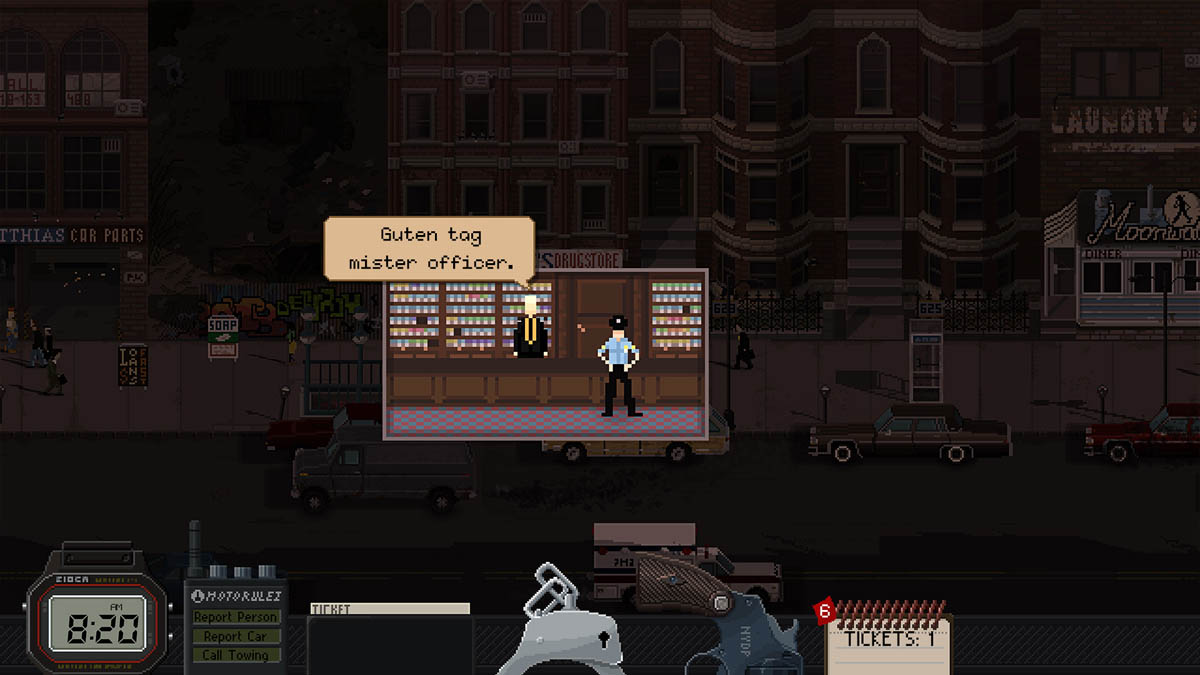Games Going Retro
Until recently it seemed that digital cultures were set to only look forward. Naively so. As it turns out, modern electronic media have a rear mirror, too. Quick technological advancement resulted in a sad realisation: the cutting-edge grows old the quickest. Data storage devices waste while old software won’t work with modern devices. At some point a group of users emerged who simply couldn’t make peace with it.
IT nostalgia blossomed by the late 1990s. It coincided with further development of the Internet and the advancement of emulators, programs enabling the use of old software on new devices. What initially was seen as eccentric entertainment suddenly became a common pastime. This brought about one of the most peculiar turns in the history of gaming. So far games had been the cutting-edge of the industry, setting the tone for technological progress, with the new always replacing the old. Then it turned out that in the early 21st century old games aesthetics (simplified graphics, modest score, clean-cut tasks instead of film-like experience) bring a breath of fresh air that the highly-commercialised industry was in dire need of.
What’s perhaps most important, such games are also far cheaper. This restored gusto for retro games later translated into a new wave of indie games, which stirred the market by providing competition for big-budget hits in the late noughties.
Going retro, of course, doesn’t simply mean coming back to the old times. In an interview for Graczpospolita.pl Krzysztof Maliński from Bydgoszcz-based Insane Code explains: ‘you don’t necessarily want to play old games, you want to play the memory of it’. Insane Code is currently working on 80’s Overdrive. While it alludes to racing classics from the mid-1980s, it’s visibly different from them. Just look at its graphics – even though it’s pixel arty, it’s definitely much more complex and overly aestheticized than the original titles that have inspired it.
Beat Cop is a similar story. Developed by Pixel Crow under the supervision of Maciej Miąsik & Adam Kozłowski, it aptly juggles the conventions typical of the turn of the 1980s and 1990s. Its structure and interface, though, are clearly tailored to the needs of spoilt players as of AD 2017. Beat Cop is the story of a demoted detective, who tries to survive in a hellishly corrupted New York. It’s a cartoonish pastiche of classic cop cinema of the 1980s. It doesn’t perhaps reflect the films as much as it renders the emotions surrounding them then, what the audience felt seeing the brutality, of an engaging yet grim reality of law enforcement agents.

'Beat Cop', photo: promotional materials
Some researchers regard nostalgia as a defence mechanism against loneliness and separation from others. Not only do we miss past events, but also the sense of community they helped to build. Therefore, we love 1980s films, because of cinemas we used to go to or because of the cosiness of watching them with our friends gathered in front of one TV set. This is especially important in the context of games. When we think of computers, consoles or tablets today, we see it as something that cuts us from the outside world. But some time ago gaming was actually a very social experience. In the pre-internet era fighting an adversary meant that they sat right next to you. In game saloons, having an audience (that is, other people just waiting for their turn) was as important as playing itself. In its early stages, the gaming market consisted of groups of enthusiasts exchanging the most interesting titles between them. Just cast your mind back to the busy atmosphere of Warsaw’s legendary car boot computer sale at Grzybowska Street.
Video games going retro is a similar phenomenon to the revival of board games. It’s driven by the nostalgia after the times when entertainment rhymed with community much more often. The way that Kolejka (English: queue), one of the biggest hits of the Polish board game industry, tunes into that longing for community is twofold. It makes a group of people sit at one table, but it also revives the experience of standing in a line, an act to which, however you look at it, people are intrinsic.

‘Kolejka’ board game, photo: Wikimedia
Perhaps what we miss is technology that not only entertains or blows our minds, but – as our memories tell us – had some human face to it, even if it was a little homespun. Instead of isolating us from each other, it brought us closer.
[{"nid":"5688","uuid":"6aa9e079-0240-4dcb-9929-0d1cf55e03a5","type":"article","langcode":"en","field_event_date":"","title":"Challenges for Polish Prose in the Nineties","field_introduction":"Content: Depict the world, oneself and the form | The Mimetic Challenge: seeking the truth, destroying and creating myths | Seeking the Truth about the World | Destruction of the Heroic Emigrant Myth | Destruction of the Polish Patriot Myth | Destruction of the Flawless Democracy Myth | Creation of Myths | Biographical challenge | Challenges of genre | Summary\r\n","field_summary":"Content: Depict the world, oneself and the form | The Mimetic Challenge: seeking the truth, destroying and creating myths | Seeking the Truth about the World | Destruction of the Heroic Emigrant Myth | Destruction of the Polish Patriot Myth | Destruction of the Flawless Democracy Myth | Creation of Myths | Biographical challenge | Challenges of genre | Summary","topics_data":"a:2:{i:0;a:3:{s:3:\u0022tid\u0022;s:5:\u002259609\u0022;s:4:\u0022name\u0022;s:26:\u0022#language \u0026amp; literature\u0022;s:4:\u0022path\u0022;a:2:{s:5:\u0022alias\u0022;s:27:\u0022\/topics\/language-literature\u0022;s:8:\u0022langcode\u0022;s:2:\u0022en\u0022;}}i:1;a:3:{s:3:\u0022tid\u0022;s:5:\u002259644\u0022;s:4:\u0022name\u0022;s:8:\u0022#culture\u0022;s:4:\u0022path\u0022;a:2:{s:5:\u0022alias\u0022;s:14:\u0022\/topic\/culture\u0022;s:8:\u0022langcode\u0022;s:2:\u0022en\u0022;}}}","field_cover_display":"default","image_title":"","image_alt":"","image_360_auto":"\/sites\/default\/files\/styles\/360_auto\/public\/2018-04\/jozef_mroszczak_forum.jpg?itok=ZsoNNVXJ","image_260_auto":"\/sites\/default\/files\/styles\/260_auto_cover\/public\/2018-04\/jozef_mroszczak_forum.jpg?itok=pLlgriOu","image_560_auto":"\/sites\/default\/files\/styles\/560_auto\/public\/2018-04\/jozef_mroszczak_forum.jpg?itok=0n3ZgoL3","image_860_auto":"\/sites\/default\/files\/styles\/860_auto\/public\/2018-04\/jozef_mroszczak_forum.jpg?itok=ELffe8-z","image_1160_auto":"\/sites\/default\/files\/styles\/1160_auto\/public\/2018-04\/jozef_mroszczak_forum.jpg?itok=XazO3DM5","field_video_media":"","field_media_video_file":"","field_media_video_embed":"","field_gallery_pictures":"","field_duration":"","cover_height":"991","cover_width":"1000","cover_ratio_percent":"99.1","path":"en\/node\/5688","path_node":"\/en\/node\/5688"}]